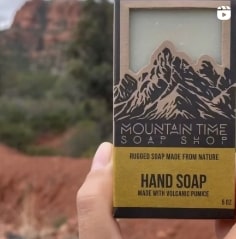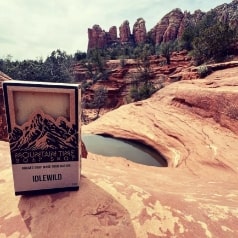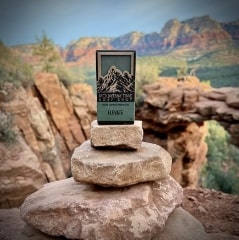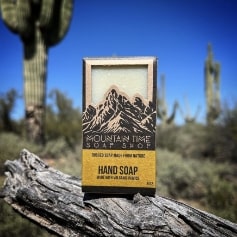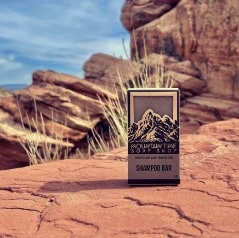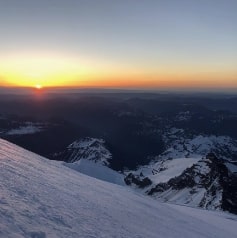It’s hard to beat the feeling of going off-grid, into the great outdoors. We love leaving the hustle and bustle behind us for rugged terrain, open spaces and fresh mountain air. Beyond the bears, bugs, steep rocks and nonexistent cell coverage, there remains one unavoidable element that keeps many from adventuring into the wild… dirt.
Getting dirty is no big deal when you’re steps away from a bathroom, shower, and clean change of clothes. But backcountry hygiene is a different story.
We know there are questions that may be keeping first time backcountry explorers from getting outside. Things like:
Where and how will I go to the bathroom?
How will I clean my hands?
What’s the best way to bathe in the backcountry?
Unwashed hands and bodies can lead to illness and infection, not to mention unpleasant odors. But there are hygiene best practices that can help you avoid getting sick or smelling bad. It’s equally important that you follow these hygiene best practices, not only for yourself but to keep our waters safe.
If you don’t follow these hygiene best practices you won’t only be putting yourself in danger. You can also harm wildlife and contaminate precious water supplies. So, let’s get your backcountry hygiene routine down before you hit the trail!
Pack Your Camping Hygiene Essentials
Any backpacker or thru-hiker will tell you that what you pack can make all the difference. Lock in your backcountry hygiene plan a few days before you hit the trail. Being prepared will help you have a more positive, enjoyable, and responsible experience in the wild. Here are some of our go-to essentials:
- Food + water
- Reusable spork
- Folding knife or multi-tool
- Water purifier
- Water bottle/bladder
- Overnight essentials:
- Tent, hammock, or bivy sack
- Sleeping bag
- Crash pad
- Headlamp
- Insulated jacket or rain jacket
- Change of clothes
- Wool socks
- Waterproof matches or lighter
- Sunscreen
- Mountain Time lip balm
- Sunglasses
- Mountain Time bar soap
- First aid kit
- Camp trowel
- Compostable toilet paper
- Toothbrush + toothpaste (Check out Huppy toothpaste for a lighter pack!)
- Collapsible sink (Try Sea to Summit Kitchen Sink )
- Dromedary Bag (This is an essential piece of gear MSR Dromedary Bag )
- Reusable/resealable bag for camp waste
- Bear-proof canister + bear spray
New to the backcountry? Check out American Hiking Society’s Ten Essentials of Hiking for more ways to prepare for your first adventure.
Backpacking Hygiene Tips
Staying hygienic while surrounded by dirt may seem nearly impossible. But, practicing basic backcountry hygiene will help you stay clean without harming the ecosystems you visit. These best practices will allow you to confidently hike 10 miles or lead a multi-day backpacking expedition.
Leave No Trace
Leave no trace means always pack out whatever you pack in. Before leaving any campsite or trailside pitstop, take a good look around to make sure the area is clear of any gear or trash before trekking onward. If you see something that shouldn’t be there, do everyone and the earth a favor – pack it out even if you didn’t leave it there! Spend some time familiarizing yourself with Leave No Trace principles.
Wash Your Hands
Collect water for handwashing only from moving water like streams, rivers, creeks. Never use water from a stagnant pool or puddle. Always carry water at least 200 feet from any water source before washing to avoid contaminating lakes, rivers and streams. Fill your MSR Dromedary bag with water and hang it from a nearby tree in a convenient location away from camp and away from the water source. This area then becomes your group hand washing station. Make sure everyone in camp is using it!

The last thing you want is for “Joey,” who is preparing dinner, to not wash his hands properly.
Clean Your Body
Do your part to keep our waters safe. Scrub off any dirt, sweat or chemicals before entering any body of water. All cleaning needs to take place 200 feet from any water source. Chemicals in bug repellent, perfume and sunscreen can kill fish and contaminate waterways.
Do Your Dishes
Clean dishes and cookware immediately after use to keep bugs, mice, and wildlife away from your camp – again, at least 200 feet from any water source. Utilize a collapsible sink to wash yourself and dishes. If possible, dump any used water on bare dirt to avoid harming native plant life. The same guidelines apply for washing clothes and gear!
Choosing the Best Backcountry Soap
Not all backcountry soaps are created equal. Even hygiene products marketed as “eco-friendly” or “biodegradable” may include ingredients that may not be suitable for backcountry use.
With product greenwashing on the rise, it’s important to look out for baseless sustainability claims. Be sure to pay close attention to product labeling, and research any companies or products marketing themselves as “green.”
A few important things to keep in mind when choosing a backcountry soap:
- Only use biodegradable soap. Even the best biodegradable soap products can harm wildlife and contaminate water sources. They still require the tiny microbes in soil to break the natural ingredients down into something the earth can use. Play it safe by using soap at least 200 feet from water sources.
- Avoid using soaps containing phosphates, which can cause harmful algae blooms.
- Ditch the fragrance. Using unscented or soap scented with essential oils will help prevent uninvited visitors such as insects, mice, and bears from crashing your camp party. Fragranced soaps also can include chemicals that could be harmful to fragile ecosystems. Stick to essential oil scents which may help repel those unwanted visitors.
We made Mountain Time Soap for adventure, so you’re always safe packing our soaps in and out of the backcountry.
An Important Note on Hand Sanitizer
Hand sanitizer does kill germs and is often used in the backcountry. That said, washing your hands with soap and water is more effective at removing all types of germs, dirt and chemicals. It’s often a safer option, too, as many hand sanitizers are full of chemicals that could harm the ecosystems where you’re exploring.
The other important thing to note about hand sanitizer, is that it doesn’t always take the dirt and other gross things off your hands. Instead, you’re left with a muddy, alcohol smelling mess that you inevitably wipe on your pants or your pack. Washing your hands with soap is the best way to get a good, clean feeling when you’re in the backcountry!
When Nature Calls…
If you’ve ever hiked through a national park, forest, or outdoor recreation area, you’ve likely found yourself in need of a bathroom. But, when you’re surrounded by nothing but nature and other hikers, you may hike (uncomfortably) with a full bladder with no obvious place to go.
Save yourself from potential tummy troubles, or worse, utter embarrassment. Familiarize yourself with the guidelines and available facilities of any backcountry destination before your trip. This information is usually available on each location’s website or trailhead signage.
Following Leave No Trace principles, you should never relieve yourself (#1 or #2) within 80 feet of a water source, trail, or campsite in the backcountry. Keeping your distance from these areas will help prevent water contamination and ensure a positive experience for other visitors.
Tips for Going #1
Peeing on your pants is almost as bad peeing in them, especially when the closest fresh pair may be miles away.
Following these tips will help you stay clean, safe and embarrassment-free when peeing in the backcountry:
- Find a spot with softer ground to avoid unwanted “backsplash.”
- Stand or squat uphill to prevent any pee from flowing your way. Pee on your shoes is also a rather unenjoyable experience (and smell).
- When winds are high, always aim downwind.
Tips for Going #2
The thought of going #2 in the backcountry is a source of stress for many, but it doesn’t have to be! With the right preparation and approach, the experience should be a breeze.
Here are some ways to keep stress at bay and avoid a messy situation. When you’re ready to go #2, grab your essentials:
- Sealable plastic bag
- Camp trowel
- Compostable toilet paper
- Camp soap and/or hand sanitizer
- WAG bag (if visiting a park or natural area that mandates packing out human waste, such as those in high alpine or canyon areas)
Next, find the perfect spot. Look for an area with loose soil and good sun exposure to speed up decomposition. Finding a spot next to a fallen tree or sturdy stump can help you save your energy and maintain stability until the deed is done. Bonus points are given for a spectacular view!
Use your camp trowel to dig a cathole. The hole should be at least four inches wide and six to eight inches deep. Don’t chuck excavated dirt too far; you’ll need it for the last step.
Once you’ve taken care of business, try to limit your TP use. Minimizing TP use helps ensure faster decomposition and reduces your environmental impact. And if you have to pack it out, less is always more!
Pro tip: cut your impact even further by using nearby plants (avoid non-poisonous species!), smooth stones or snow.
When you’re finished, cover your tracks. Use the dirt you dug out to fill the hole and make it look like you were never there!
Ready for a Successful Backcountry Season?
While preparing for a backcountry trip can feel like a lot, once you get a system and process down, your routines become second nature.
So, pack your quality backcountry hygiene essentials. Follow Leave No Trace principles and other wilderness best practices. Be mindful of your proximity to other hikers, campsites, and water sources while relieving yourself, handwashing, bathing and cleaning your gear. Keep yourself, fellow travelers, and our planet safe.
If you haven’t purchased your backcountry soap yet, there’s still time before the summer mountain backpacking season starts! All our soaps are backcountry safe and effective. And if you’re serious about taking your soap game to the next level, sign up for our soap subscription program, The Adventure Soap Club!
But, to start with the basics, get our simple, pure, unscented soap for your next trip.







